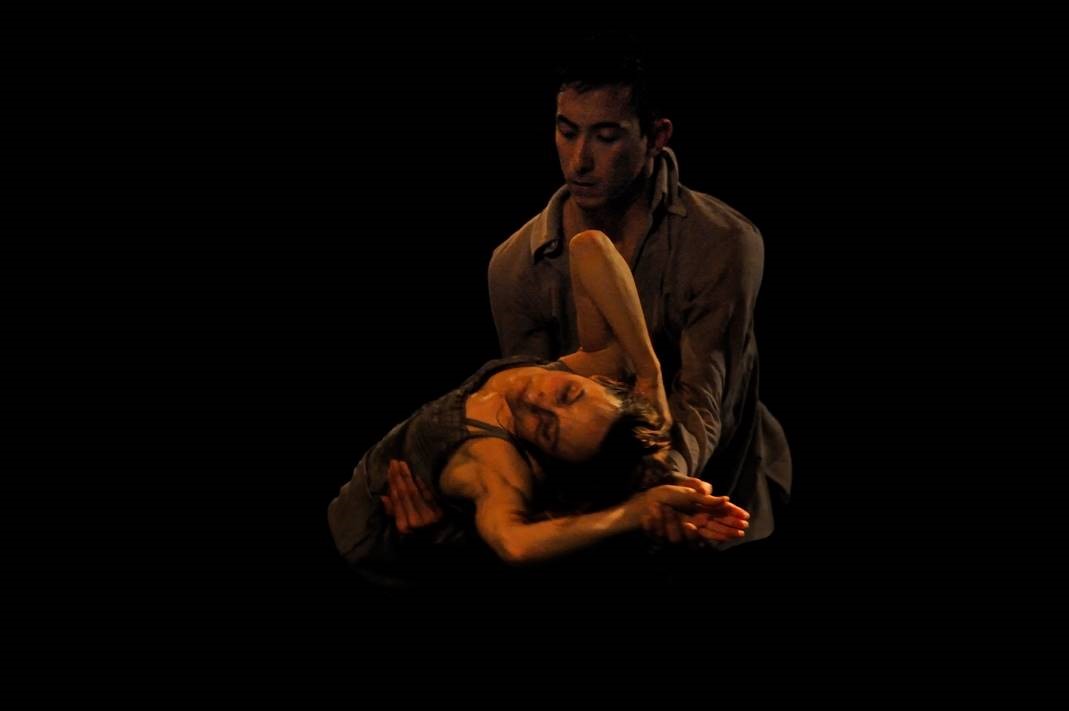The prodigious streetdancer Tommy Franzén pops up everywhere from family-friendly hip-hop shows by ZooNation, Boy Blue and Bounce to serious contemporary ballet by Russell Maliphant and Kim Brandstrup, but he’s a bit of a Macavity. He ought to be recognised as a star, but he effaces himself award-winningly in others’ work. That chameleon quality is a problem with his venture into the solo limelight, a Charlie Chaplin tribute, SMILE, on the Sadler’s Wells triple bill of associate choreographers last week.
Franzén’s mercurial moves are always thrilling to watch, and his creative extension of Chaplinesque capering into some acrobatic popping and b-boying does OK in making the Little Tramp a street brother of hip-hop’s outsiders. Still, something much funnier and more provocative is needed than ZooNation director Kate Prince’s saccharine tears-of-a-clown approach, with an autopilot Louis Armstrong and Harry Connick Jr playlist. Chaplin was a complicated figure, with unpopular sexual and political inclinations, and a mesmerising charisma. The right hat, cane and moustache aren’t enough to make even this gifted dancer arresting.
I’ve enthused about Crystal Pite before. Her duet, A Picture of You Falling, is another acutely inventive and theatrical experience. It dissects the essence of movements — hand, hip, knees — and then reassembles them into a language of intense, disintegrating passion between two people.
Spotlights are used piercingly in the darkness (by Robert Sondergaard) to separate and unite the dancers, Peter Chu and Anne Plamondon. A female voice-over makes arresting statements, written by the choreographer: ‘Look. This is you. This is a picture of you falling.’ There is an almost freeze-frame examination of the process whereby a dancer’s body hits the floor. ‘This is the place — this is where it happened,’ says the voice as the couple grapple in a troubling, increasingly hostile duet. Pite knows exactly, refreshingly, what she is doing.

Hofesh Shechter’s the barbarians in love suffered by comparison with both Pite’s precise vision and his own pile-driving previous hit, Political Mother. That mighty political protest work — the Arab–Israeli conflict in dance, you might say — vibrantly exploited the Yiddish folk vigour of his idiom. But sloganising needs one kind of expression, guilt about sexual infidelity needs very much another, and Shechter’s language for his six white-clad dancers is less articulate than his voice-over where he haltingly confesses to cheating on his wife. That makes you sit up, more even than when all the dancers line up starkers at the end.
Coincidentally, the Arab–Israeli conflict in dance was just what Jonathan Burrows and Matteo Fargion were lampooning in the Lilian Baylis Studio a few days earlier, where they unveiled their ‘first politically overt’ double bill, One Flute Note and Body Not Fit For Purpose, to which I took enormous expectations.
These two paunchy little men in rumpled jeans, the bloodhound-eyed composer Fargion and the beaky, bespectacled Burrows, belying his past as a magnetic Royal Ballet character dancer and choreographer, have been making game-playing duos for a decade, some of which have done me physical damage, I’ve laughed so hard. Please let me have their Cow Piece on my desert island, with its maltreated battalions of toy cows.
Like the Little Tramp, their view is upwards into the underside. But they do not tell you whether the outcome of whatever it is we see them apparently giving instructions to create is any good. They appear and disappear, as enigmatically as technicians with notes for the sound booth. Applause is sporadically heard offstage. ‘One flute note,’ says Fargion, cuing the whoo of a flute. ‘Two flute notes’ — whoo, whoo. ‘Tubular bells’ — a rustle of chimes. ‘Gestures’ — Burrows launches into prestissimo hand-dancing. ‘45 choirs’ — I think we assume that nothing can be taken on trust. This is one to be enjoyed by cryptic crossword-puzzlers.
In the second piece they’re sitting at a desk, calling out themes for dance works, wincingly close to the bone of the present contemporary dance community. ‘The Arab–Israeli conflict!’, ’Bankers!’, and ‘Sometimes I wish I lived in a lovely community of low-carbon emissions!’ — to each of which Burrows provides a gabble of explanatory wiggles and gestures while Fargion strums a lute roughly. It is daft and droll: one of their suggestions is ‘Artist, 54, happy to gentrify your city — no pension at all’. Still, I feel their satire is thinning. Maybe it’s time the pair considered a trial separation.






Comments